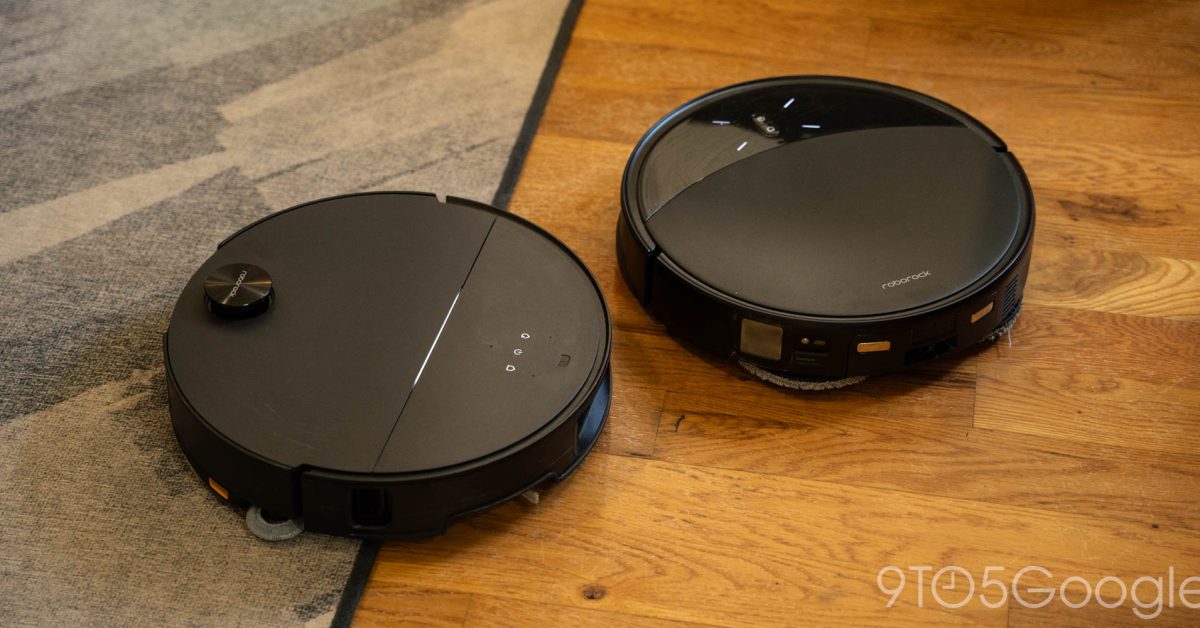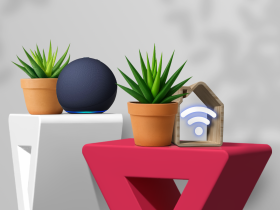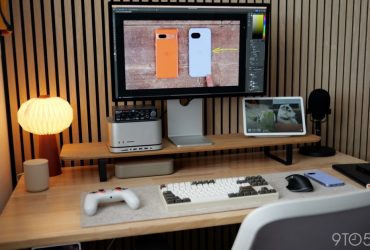
Contents

Roborock is one of the biggest and best names in robot vacuums, and the company is trying something new this year with the Saros 10 and Saros 10R being extremely similar in many ways – including their price – but with each having a key strength. Which one is better? I’ve spent the last two months trying to find out.
The Saros lineup is a new offshoot of Roborock’s flagship robot vacuum and mop products, and one that delivers in one area that really counts – size. Over the years robot vacuums have advanced in a ton of ways, but the key differentiator on the Saros 10 series, I’ve found, is that both models are shorter to the ground compared to others. By ditching the top-mounted sensors in two clever ways, these machines can fit underneath more things, providing a deeper clean to your home.
Roborock Saros 10 accomplishes its shorter profile of 7.98cm (3.14 inches) by taking the important top-mounted sensors and putting them into a retractable housing. This allows the machine to see that it’s coming up to a shorter object and pull down the sensors so it can fit. Neat! Meanwhile, Saros 10R does away with a top-mounted array entirely, instead using a new “StarSight” system for navigation that doesn’t need that higher array.


In action, these systems both work fairly well. The Saros 10R’s StarSight system is more advanced for navigation pretty much across the board, leading to a machine that’s just better at avoiding obstacles. The 10R regularly avoided cables, bits of plastic, and other small obstacles that constantly cause trouble for other robot vacuums I’ve tested, including the Saros 10. However, neither machine was perfect when it came to working with its additional clearance under furniture. Saros 10 and 10R regularly get caught underneath my couches (roughly 3.3-inches of clearance) because, while they rightly found they could fit under the initial gap, they couldn’t avoid portions of the couch once underneath. The 10 because it couldn’t raise its sensor array, and the 10R because those obstacles weren’t in view. While I appreciate that added clearance for getting under cabinets and tables in my home that other vacuums couldn’t, I ended up needing to establish no-go zones for my couch and a couple of other pieces of furniture that these vacuums would repeatedly get caught underneath. This aspect continues to improve generation by generation, and Roborock also deserves credit for having a feature in its app where the robots will log where they often get stuck and suggest making no-go zones for those locations! That said, I think Roborock could tune these a bit better (or offer an option to tune it on the user’s end) because, right now, they’re a bit too optimistic about where they’ll fit.





The other boost to traversing that you’ll find on these robots is the ability to raise the entire chassis up to 1.57-inches. This is a huge benefit when it comes to getting over room borders or certain obstacles. The trim around my living room fireplace has been a sore spot for many robot vacuums I’ve used, but the Saros 10 series makes the leap with ease. The same goes for the wider feet of my standing desk, which both of these robots can climb over instead of getting caught on.
But how’s the actual cleaning process?
This is perhaps the biggest area where these two models differ.
The Roborock Saros 10R features a strong vacuum paired with dual spinning mop heads on “FlexArm” mounts. This allows the mop head to be extended out to fit into a tight corner or better clean along a wall. It’s ridiculously cool to see in person, and really does result in a better overall clean.


Meanwhile, Saros 10 leans on Roborock’s “Sonic” mop which has a vibrating scrub pad to clean the floors. It then has an extra mop on the side to catch corners and the wall. I’ve found that Saros 10R seems to deliver better coverage, while the scrubbing of the 10 leaves my floors just a bit cleaner, especially in the case of dried mud or spills. The Saros 10 also features a FlexArm for the vacuum side brush, meaning it’s better at getting into those corners for dust and debris.


Both machines have a split brush that’s better at not getting tangled in hair – perhaps my favorite update to robot vacuums in recent years – and can both lift the mop when going over carpet, or detach it entirely and leave it in the dock. That second bit is rather impressive, though it doesn’t kick in much in my home that’s entirely hard flooring with area rugs throughout. For a bit more insight on how the 10R works in a carpeted home, check out 9to5Toys.
The other thing you’ll find on both of these robots is an auto-empty dustbin and auto-cleaning mops with clean and dirty water tanks. Capacity isn’t particularly impressive, but Roborock’s designs are more convenient than ever to work with. The dirty water tank is exposed on the 10R, making it easy to grab and empty and then put back. On the 10’s dock, there’s a red light to indicate you need to empty or refill the water. These are nice, welcome touches. The docks as a whole work very well and are easy to keep clean, and have drying sequences that are remarkably quiet. The only headache I ran into is that, on both docks, I’d regular find the robots offline because they hadn’t fully docked into place and went into a sleep mode. This only requires re-seating the robot in the dock, but it’s a strange problem that I haven’t run into in quite a while.


The Roborock app as a whole remains as good as ever. It offers smart suggestions to improve cleaning and puts all the needed information in a useful and thoughtful place. The ability to use the robots as a moving camera remotely – which includes an audible announcement from the vacuum to inform you that the camera is on – is also handy.
Comparing the Saros 10 and Saros 10R is really a game of splitting hairs. Both models offer excellent navigation and cleaning, with strengths in their own areas. I think Saros 10 is the better overall cleaning tool, with more effective vacuum coverage and a scrubbing mop. Saros 10R, meanwhile, is more of a “set it and forget it” machine due to its improved navigation and obstacle avoidance. What’s nice is that you get to choose which of those works best for you, as these both have the same price point at $1,599.
Which one would you use?
Roborock Saros 10
- Roborock Store
- Amazon
Roborock Saros 10R
- Roborock Store
- Amazon
Roborock Saros 10 vs Saros 10R Feature Comparison
Cleaning
| Roborock Saros 10 | Roborock Saros 10R | |
| FlexiArm Riser Side Brush | ✓ | |
| Extra Edge Mopping System | ✓ | |
| FlexiArm Design Mop | ✓ | |
| High-speed Sonic Mopping | ✓ | |
| Dual Spinning Mops | ✓ | |
| Automatic Mop Lifting | ✓ | ✓ |
| Automatic Mop Detaching | ✓ | ✓ |
| Main Brush Type | DuoDivide Brush | DuoDivide Brush |
| Automatic Brush Lifting | ✓ | ✓ |
Navigation & Controls
| Roborock Saros 10 | Roborock Saros 10R | |
| Obstacle Avoidance | ✓ | ✓ |
| LDS Laser Navigation | ✓ | |
| 3D ToF Navigation | ✓ | |
| Adaptive Route Algorithm | ✓ | ✓ |
| Ultrasonic Carpet Sensing | ✓ | ✓ |
| App Control | ✓ | ✓ |
| Third-party Voice Control (Google Home, Alexa) | ✓ | ✓ |
| Built-in Voice Assistant | ✓ | ✓ |
Dock
| Roborock Saros 10 | Roborock Saros 10R | |
| Automatic Mop Washing | ✓ | ✓ |
| Automatic Mop Drying | ✓ | ✓ |
| Intelligent Dirt Detection | ✓ | ✓ |
| Auto Detergent Dispenser | ✓ | ✓ |
| Auto Tank Refilling | ✓ | ✓ |
| Auto Dust Emptying | ✓ | ✓ |
Basic Specs
| Roborock Saros 10 | Roborock Saros 10R | |
| Volume (Balanced Mode) | 64dB | 65dB |
| Suitable Coverage Area | 240sqm/2500sqft | 200sqm/2100sqft |
| Dustbin Volume/Capacity | 270ml | 270ml |
| Water Tank Capacity | 70ml | 69ml |
| Battery | 6,400 mAh | 6,400 mAh |
| Runtime (Quiet Mode) | 220 minutes | 180 minutes |
| Robot Dimensions | 350x353x79.8mm | 350x353x79.8mm |
| Dock Dimensions | 440x409x470mm | 381x475x488mm |
More on Smart Home:
- Review: Narwal Freo X Ultra is my favorite robot mop, and now it finally works with Google Home
- The Nest you knew is dead – now we know what the Google Home era really looks like
- Review: ADT+ is the best security system for Nest users, but Google holds back the future
Follow Ben: Twitter/X, Threads, Bluesky, and Instagram
Add 9to5Google to your Google News feed.
FTC: We use income earning auto affiliate links. More.
What’s your reaction?
Love0
Sad0
Happy0
Sleepy0
Angry0
Dead0
Wink0




![what-features-do-you-get-with-gemini-advanced?-[april-2025]](https://betadroid.in/wp-content/uploads/2025/04/16164-what-features-do-you-get-with-gemini-advanced-april-2025-280x210.jpg)


![what’s-new-in-android’s-april-2025-google-system-updates-[u:-4/18]](https://betadroid.in/wp-content/uploads/2025/04/16092-whats-new-in-androids-april-2025-google-system-updates-u-4-18-370x250.jpg)
Leave a Reply
View Comments